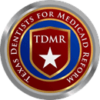TDMR has compared the fee schedules for TMHP THSteps Medical services from 2019 and 2024 to determine if doctors are being hampered by the same reluctance from Texas HHS to increase fees that have plagued Medicaid dentists over the last several years.
The results are in, and the answer is no. There is no such reluctance.
Significant increase in fees
 Starting in 2022, medical fees were significantly increased for almost all THSteps medical services, and several received whopping increases, one over 6000% if the TMHP figures provided are accurate. The comparison is shown in a PDF table below with links to download the individual fee schedules.
Starting in 2022, medical fees were significantly increased for almost all THSteps medical services, and several received whopping increases, one over 6000% if the TMHP figures provided are accurate. The comparison is shown in a PDF table below with links to download the individual fee schedules.
The THSteps medical services listed in the comparison comprise inoculation services and medical assessments. Fees for vaccines were not included in the comparison, nor were billing codes that appeared only in one or the other of the 2019 and 2024 schedules but not both.
Doctors dealing with 2007 fees in 2019
The review of the 2019 fee schedule shows that Medicaid doctors were pretty much in the same position as Medicaid dentists at the time. Most of the medical evaluation fees had been set in 2007 and had been cut by 2% since then. Fees related to providing vaccinations had increased in 2012.
The 2024 fee schedule shows a much different story. All the fees were reviewed in 2022 and 2023 and all but one were given a healthy increase.
Incredible increases in 2022/23
Fees for the following increased radically:
-
- 75% for Immunization administration
- 87% for initial comprehensive preventive medicine evaluation and management of an individual including an age and gender appropriate history, examination, counseling/anticipatory guidance/risk factor reduction interventions, and the ordering of laboratory/diagnostic procedures, new patient; infant (age under 1 year)
- 205% for developmental screening (e.g., developmental milestone survey, speech and language delay screen), with scoring and documentation per standardized instrument
- 1226% for administration of patient-focused health risk assessment instrument (e.g., health hazard appraisal) with scoring and documentation, per standardized instrument
- 6304% for administration of caregiver-focused health risk assessment instrument (e.g., depression inventory) for the benefit of the patient, with scoring and documentation, per standardized instrument.
Systemic bias
With dentists operating under the weight of reduced Medicaid patient numbers due to the great unwinding, inflation and staffing problems and a fee schedule from 2007, this is an unbelievable duplicity.
This glaring contrast highlights what we can only call a systemic bias against Medicaid dentists. It is incongruous that while medical providers are seeing substantial increases that reflect the current economic climate and the cost of their services, dental providers are left to contend with outdated fees that fail to meet the financial demands of modern dental practice.
By the state and Texas HHS not adequately adjusting dental fees, the system places a lower value on dental health, leading to a long-term decrease in provider participation and access to care for Medicaid recipients.
Must be remedied
As the state gears up for the next legislative session with probably another multi-billion dollar surplus, we can only hope that HHS Provider Services and the legislature will act to keep dental providers in the system.


This is the age-old story of supply and demand. We are reluctant to send our contract termination letters and hence the supply of Dentists accepting Medicaid is higher. Why would you increase reimbursements if the dentist next door is willing to accept the unacceptable fees that are being offered. A plumber values his time more than a Medicaid dentist does.
We just received the Active/Inactive numbers for Mediciad dentists for 2023 from an FOI request to HHSC. Our next story is about the dramatic increase in the number of inactive dentists from 2022 to 2023. Highest ever.
Make sure you report accurately on this TDMR so your readers know that the dentists who are dropping are the individually owned practices and not the DSO chains, hedge funds, corporate owned dentistry, etc., who are leaving Medicaid. If you can get the numbers of dentist leaving Medicaid on an FOI then why not ask for the annual Medicaid reimbursement for these providers who dropped and let’s see how active they were in Medicaid? And then let’s evaluate if it’s really higher fees that are needed or is there a something else driving this exodus?
We have those figures and you are correct that it is the low volume providers, those treating less than 30 Medicaid patients a year as Texas HHS terms them, that are the vast majority inactive. Inactive means zero Medicaid billings during the calendar year. Historically, this has always been the case though. There are definitely issues for such providers besides fees. TDMR would be happy to publish more about those issues and even present the information to the HHS dental director as well. If you wish to provide your views on this to us, please email info@tdmr.org and we’ll get it done. Adding several thousand low volume providers back into the system would be a great reform. The point of the fee issue is that the larger practices and chains that treat the vast majority of Medicaid clients in the state, several million children, and are the backbone of the program are going unviable due to the current economic climate. The system is liable to crumble for all those children if this issue isn’t addressed this legislative session.